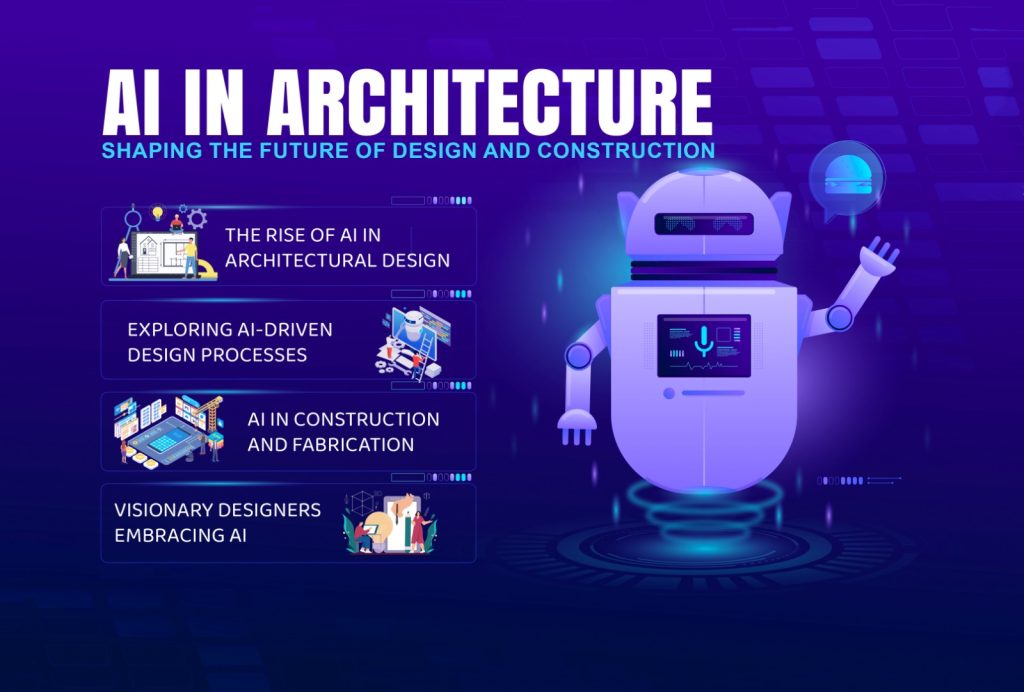AI in Architecture: Shaping the Future of Design and Construction
In an era where technology is transforming every industry, artificial intelligence is leaving an indelible mark on architecture. From conceptual design to construction and beyond, AI is reshaping how we envision, plan, and build our environments. This blog explores the dynamic relationship between AI and architecture, highlighting the groundbreaking technologies, influential designers, and the opportunities and challenges that lie ahead.
The Rise of AI in Architectural Design
In recent years, AI has become an essential tool in architectural design, revolutionizing the creative process and expanding the possibilities for architects. AI algorithms can analyze complex datasets, predict design outcomes, and generate innovative architectural forms that might not be achievable through traditional methods. Tools like generative design software enable architects to explore countless design iterations, balancing aesthetics, functionality, and sustainability with remarkable efficiency (Carpo).
Exploring AI-Driven Design Processes
AI-driven design processes leverage advanced algorithms and machine learning to analyze spatial relationships, optimize energy efficiency, and predict environmental impacts. These tools allow architects to test designs against real-world scenarios, enabling informed decisions early in the planning phase. For example, AI tools can simulate sunlight exposure, airflow, and thermal performance to ensure buildings are both energy-efficient and comfortable for occupants (Burry and Burry).
AI in Construction and Fabrication
Beyond the design phase, AI is making significant contributions to construction and fabrication. AI-powered robotics are streamlining construction workflows, enhancing precision, and reducing material waste. Technologies such as robotic arms for fabrication and AI-guided 3D printing are enabling the creation of complex structures with speed and accuracy. Additionally, predictive analytics powered by AI help construction managers identify potential delays and optimize resource allocation (Kensek).
Visionary Designers Embracing AI
Innovative architects and designers around the world are leveraging AI to push the boundaries of what is possible in architecture. Pioneers like Zaha Hadid Architects and BIG (Bjarke Ingels Group) have integrated AI tools into their workflows to create futuristic, efficient, and sustainable designs. These visionaries are not only reimagining traditional building techniques but also exploring how AI can address challenges such as urban density, sustainability, and affordability (Lupton and Smith).
Challenges and Opportunities Ahead
While the integration of AI in architecture brings immense potential, it also raises critical challenges. Ethical concerns surrounding data privacy, job displacement, and the role of human creativity in a tech-driven design process must be addressed. Furthermore, architects need to adapt to new workflows and acquire digital literacy to harness AI effectively. However, the opportunities far outweigh the challenges, as AI has the

potential to create smarter cities, more sustainable buildings, and more inclusive spaces (Mitchell).
The future of architecture is undeniably intertwined with artificial intelligence. From revolutionizing design processes to transforming construction practices, AI is empowering architects to dream bigger and build smarter. As we continue to explore the intersection of technology and design, one thing is clear: AI is not replacing architects—it is enhancing their ability to create a better world.
Thank you for joining us on this exploration of AI in architecture. Stay connected for more insights at the intersection of design and technology!
For further assistance, visit our channel and refer the video .

References
- Burry, Mark, and Jane Burry. The New Mathematics of Architecture. Thames & Hudson, 2010.
- Carpo, Mario. The Second Digital Turn: Design Beyond Intelligence. MIT Press, 2017.
- Kensek, Karen. Building Information Modeling: BIM in Current and Future Practice. Wiley, 2014.
- Lupton, Ellen, and J. Abbott Miller. Design Writing Research. Princeton Architectural Press, 1996.
- Mitchell, William J. City of Bits: Space, Place, and the Infobahn. MIT Press, 1996.
Share This :


Your article helped me a lot, is there any more related content? Thanks!
Your point of view caught my eye and was very interesting. Thanks. I have a question for you.
Thank you, your article surprised me, there is such an excellent point of view. Thank you for sharing, I learned a lot.